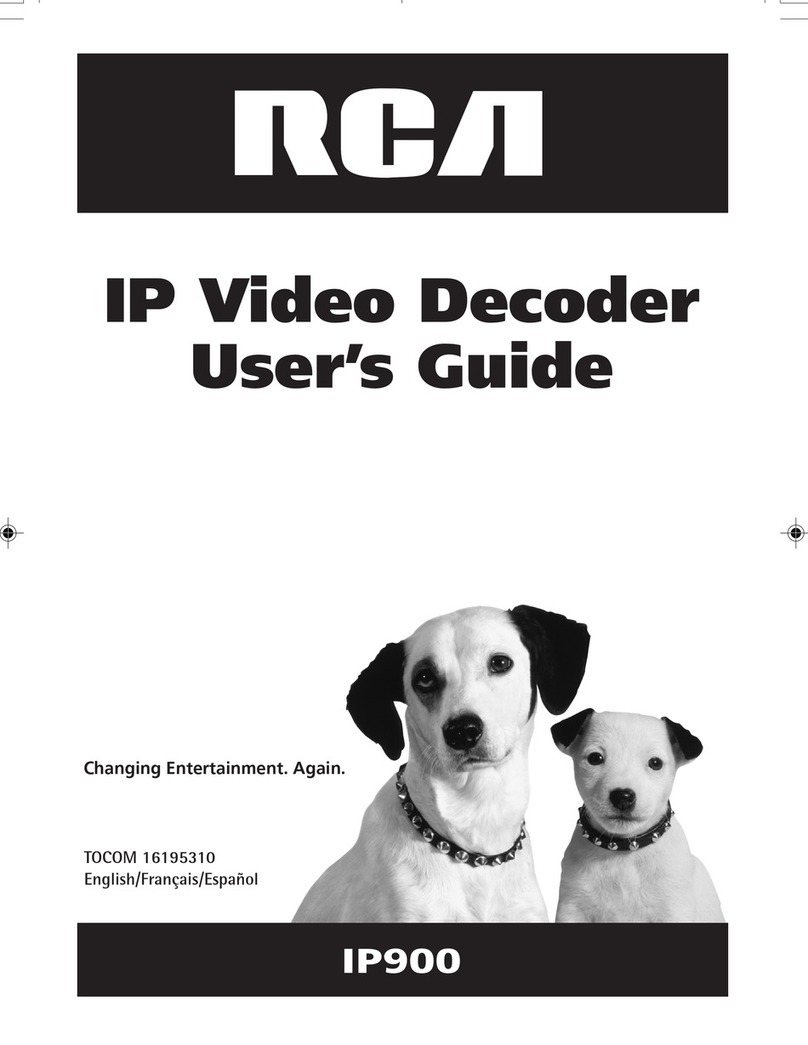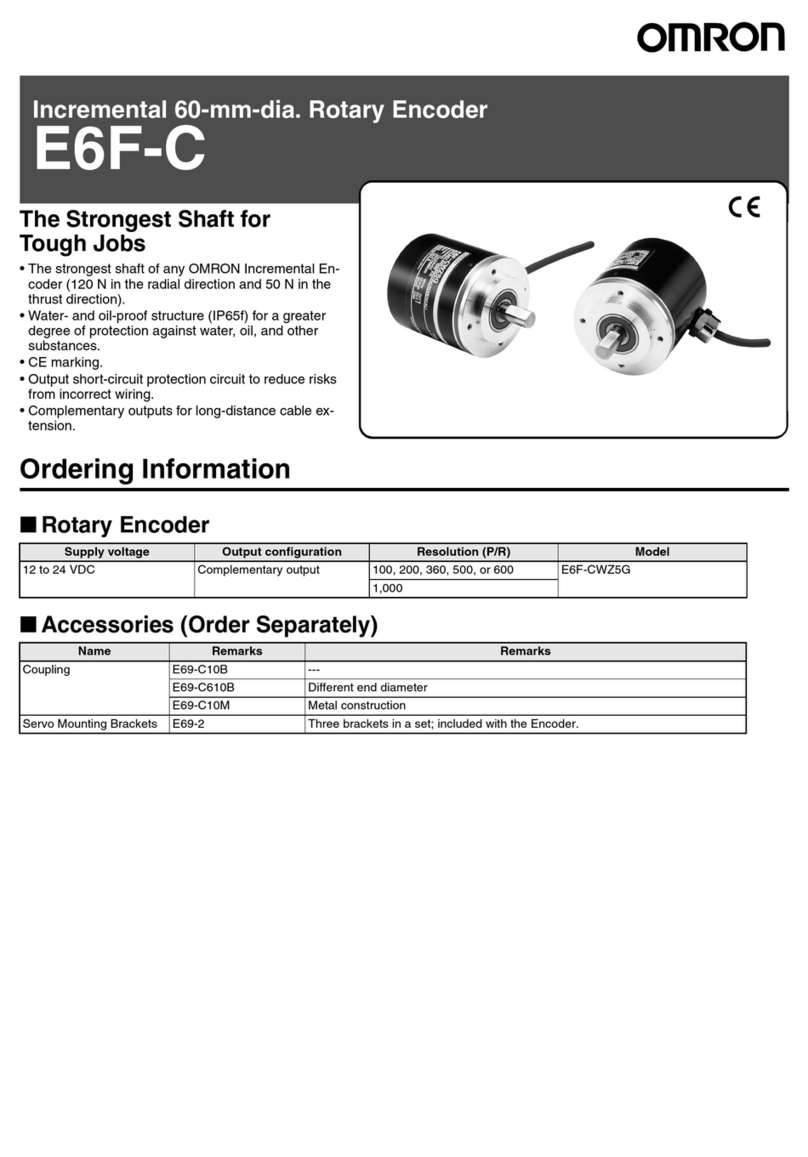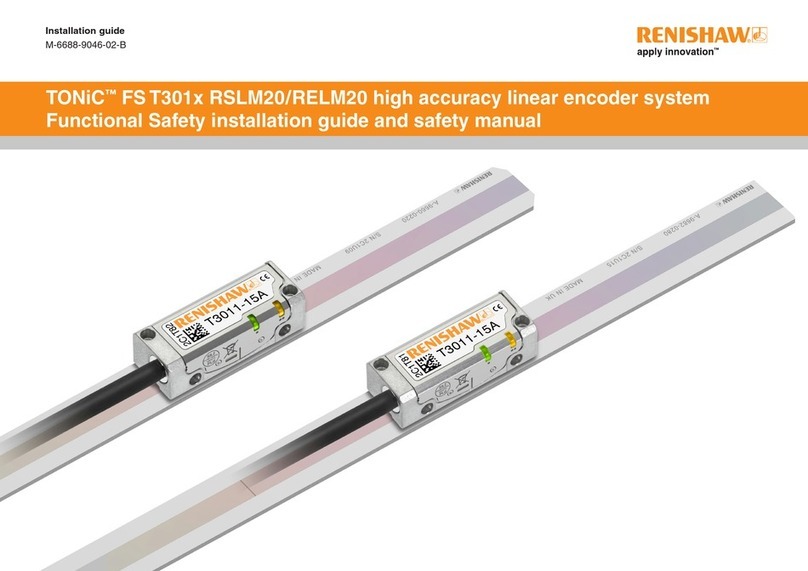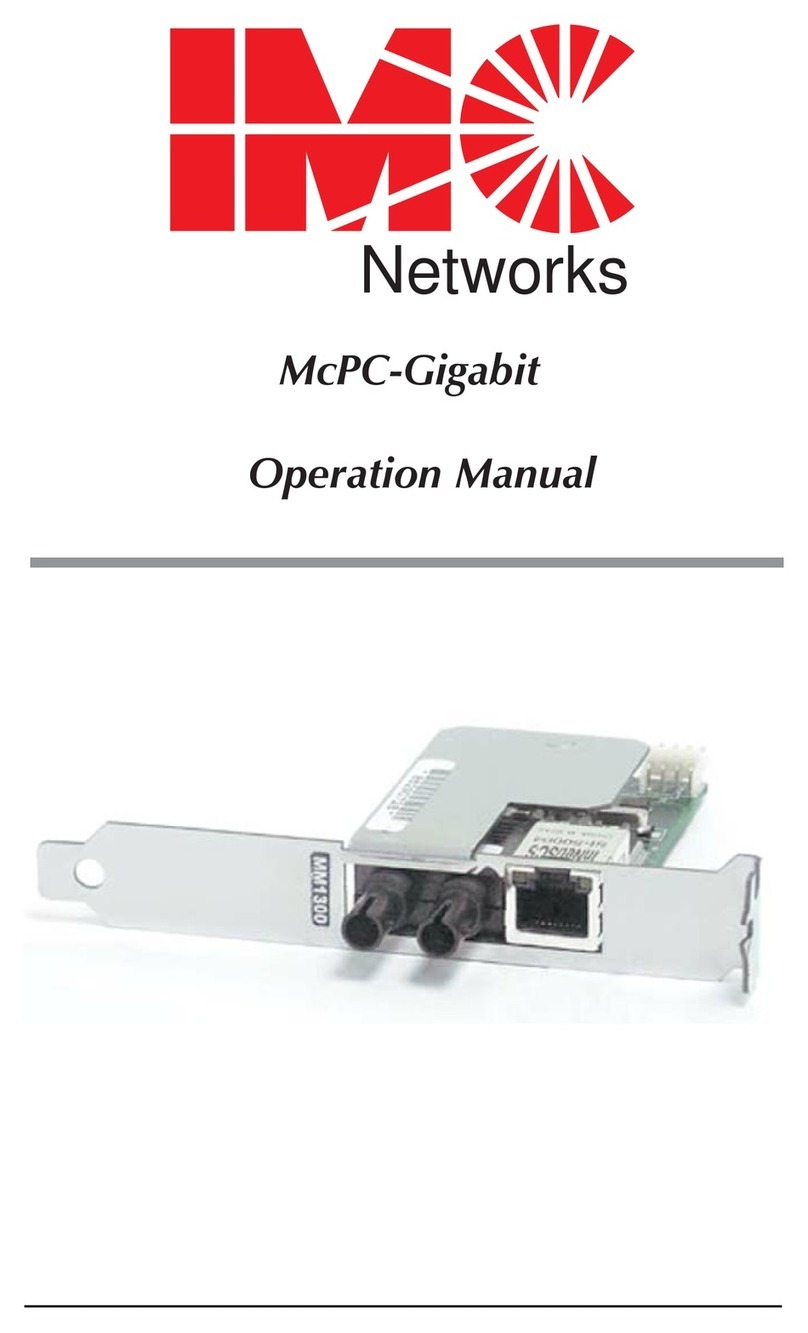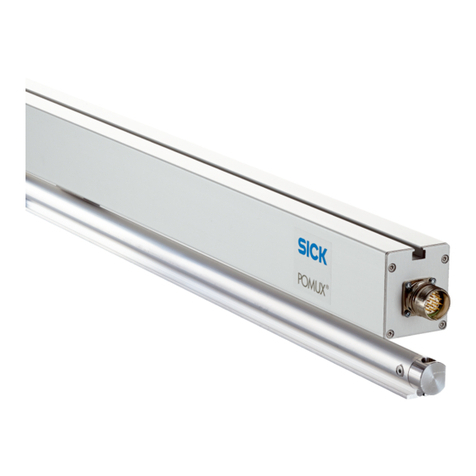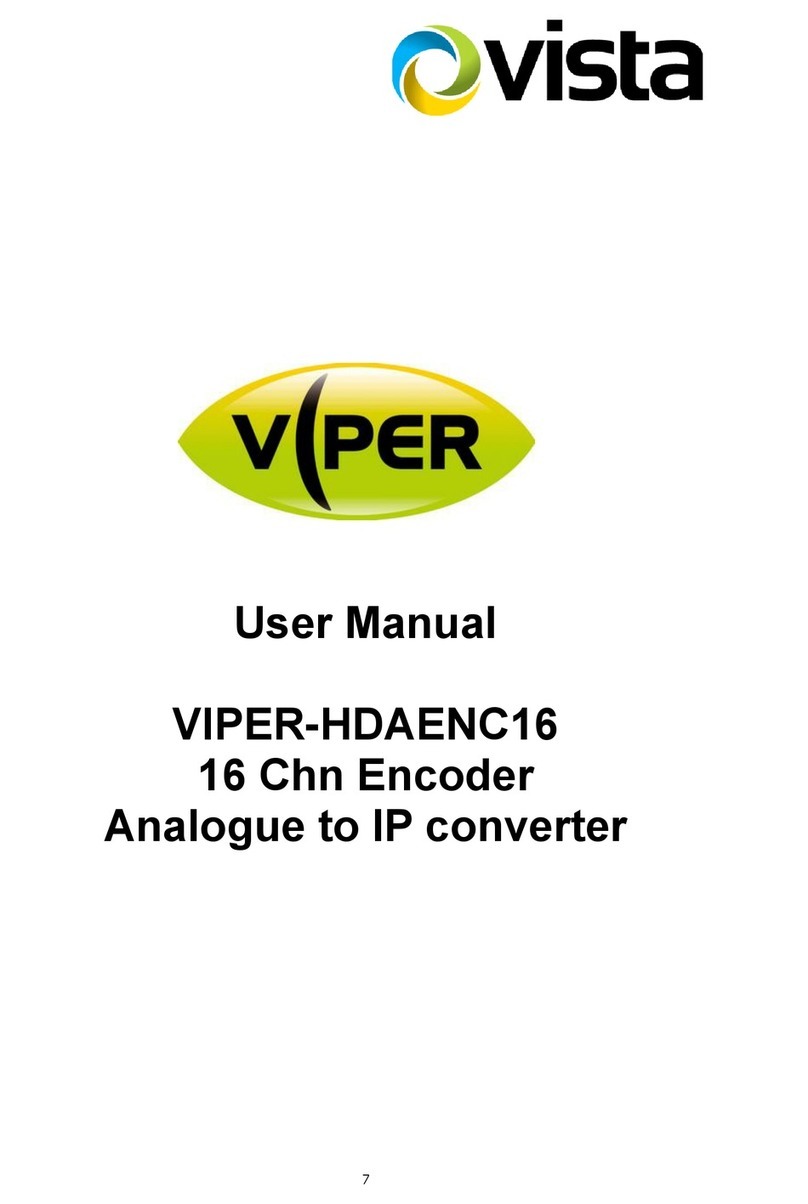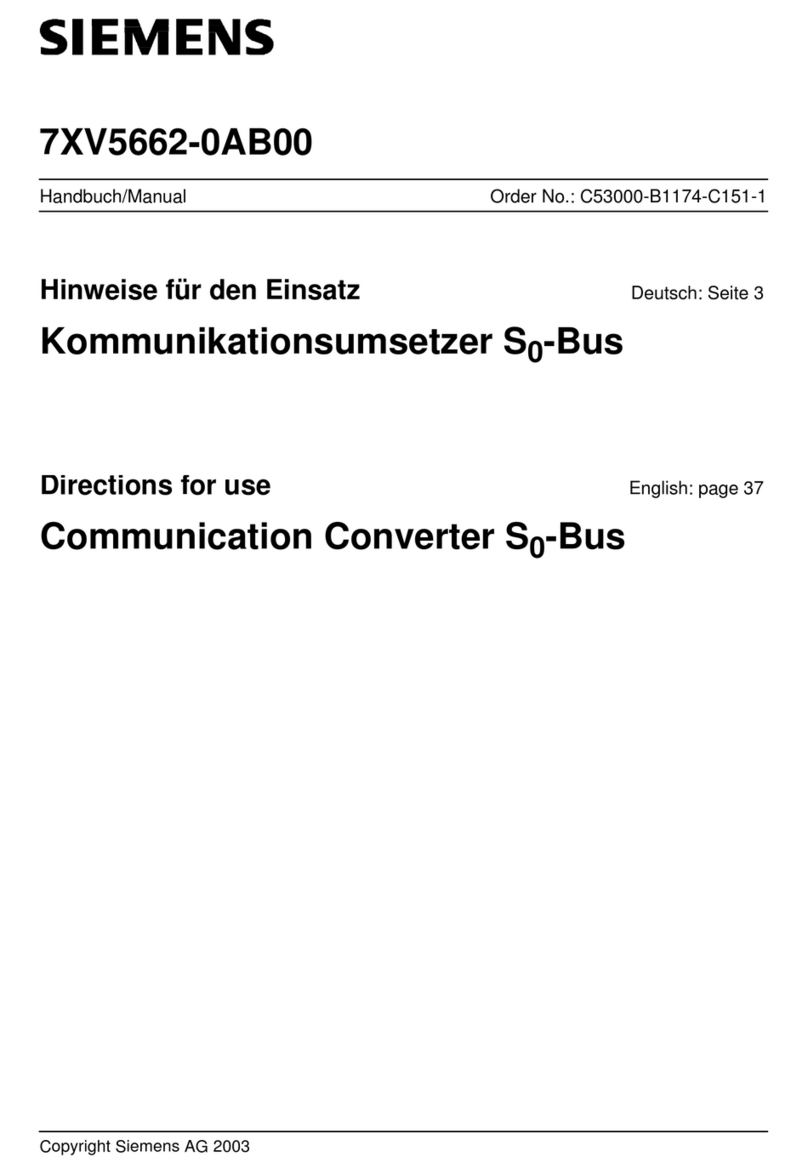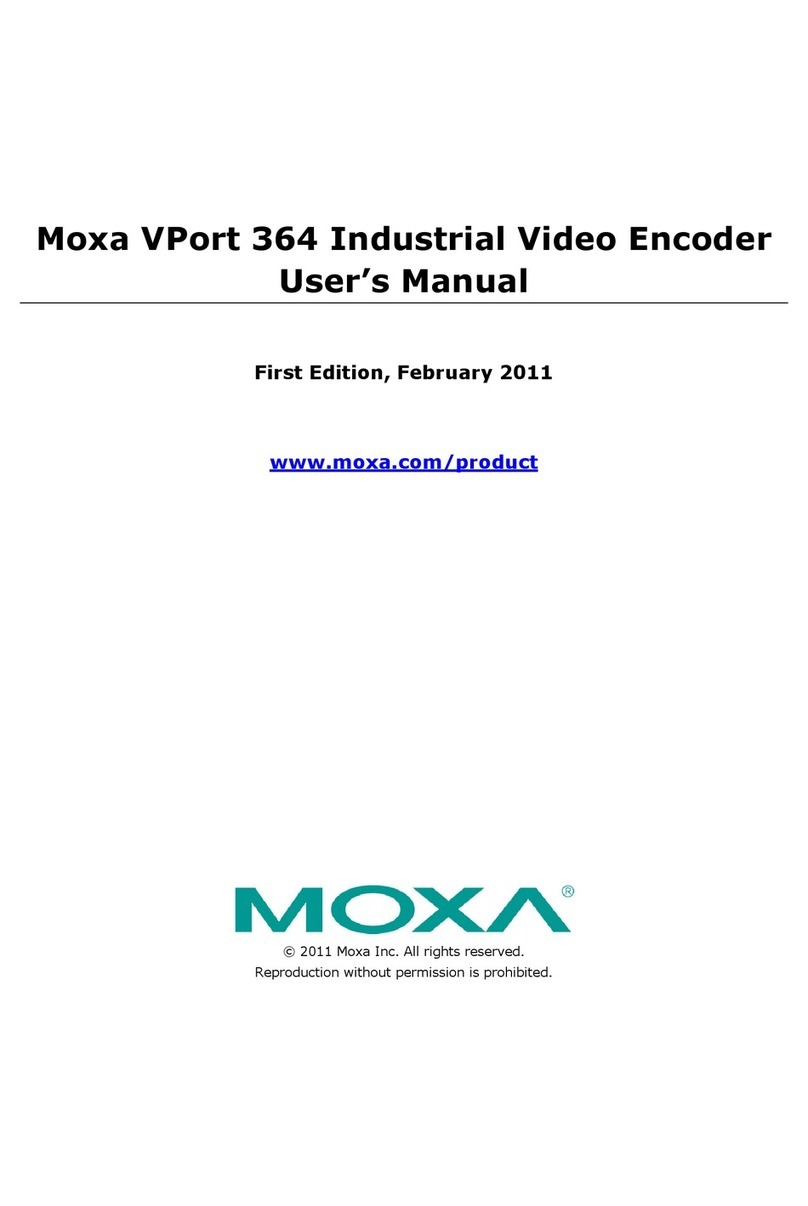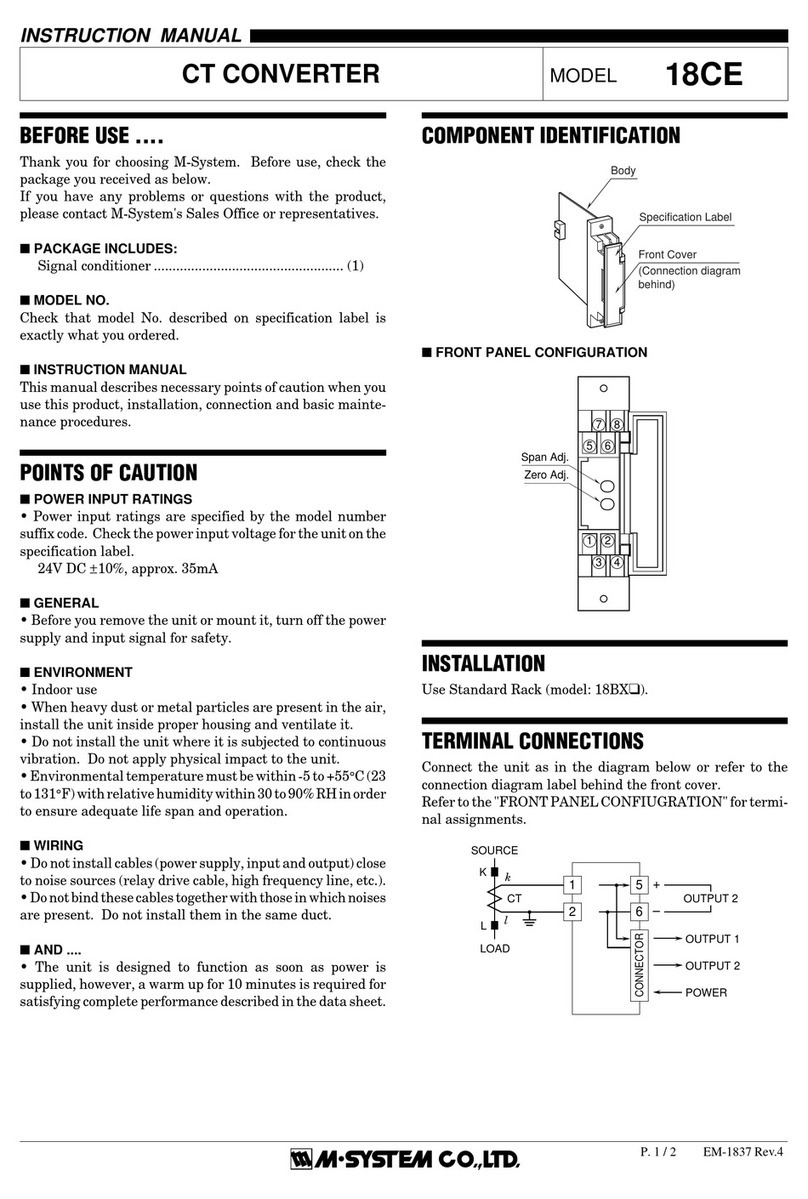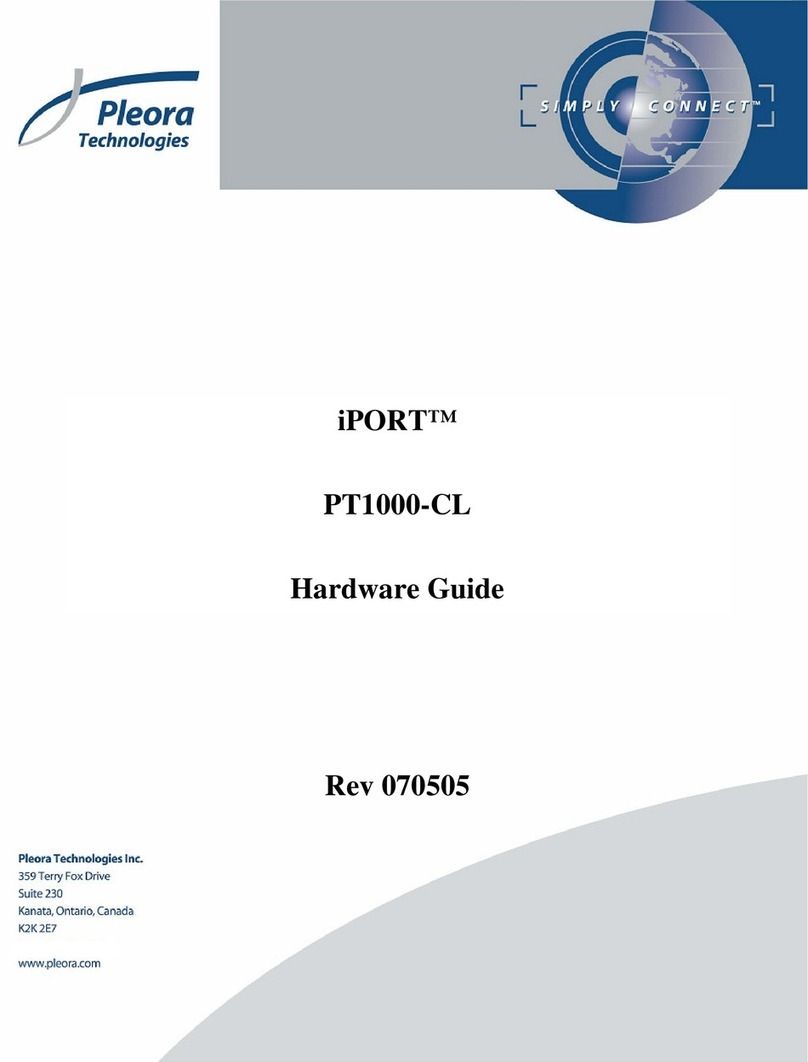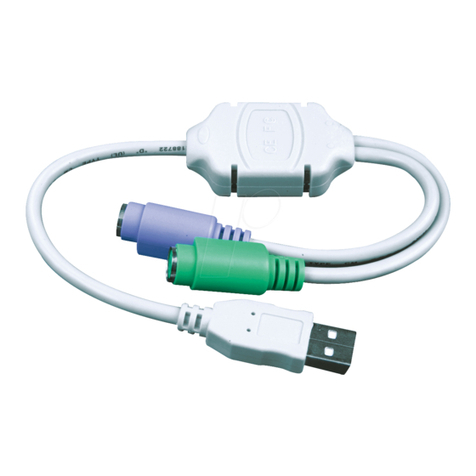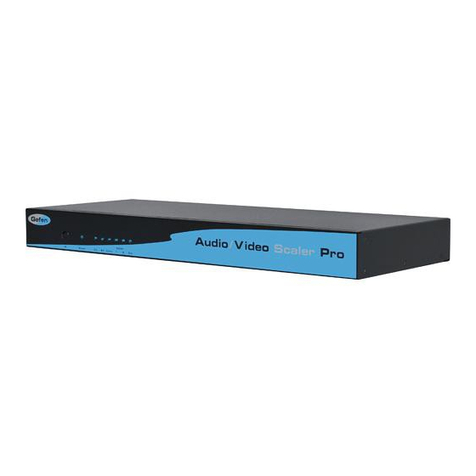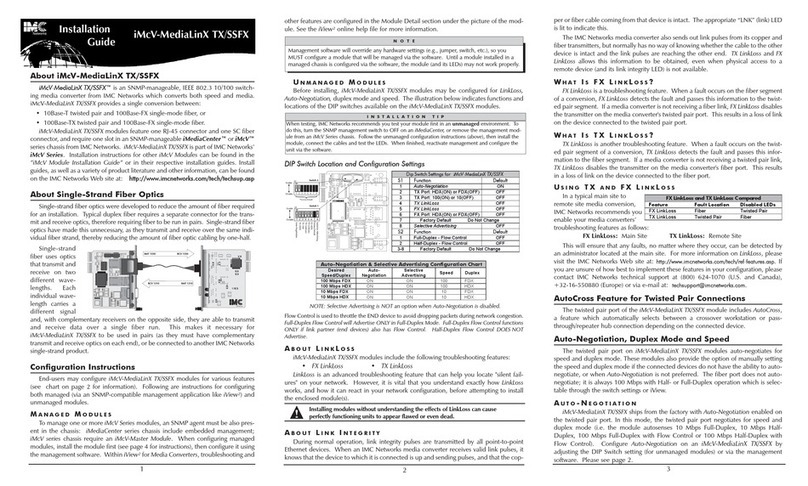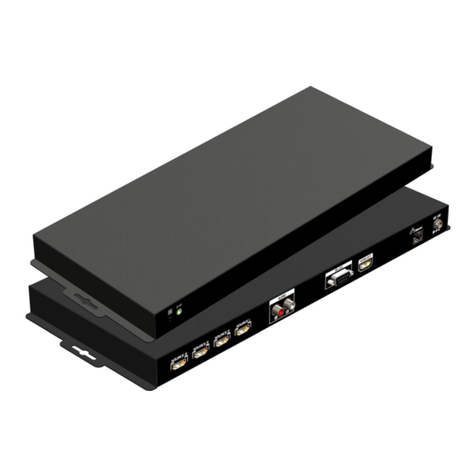AEG ID ARE i5 User manual

Operating Instructions
for the
ISO Long Range Decoder
ARE i5 –MTX –RS 232
Instruction Manual

--------------------------------------------------------------------------------2/20--------------------------------------------------------------------------------
Scope
1INTRODUCTION 4
2INSTALLATION OF THE READER 4
2.1 Using Serval Readers within a Close Operating Area 4
2.2 Reading Performace 4
3ELECTRICAL AND MEACHNICAL POPERTIES 5
3.1 DataPort and Power Supply Cable 5
3.2 Antenna Cable and Fine Tuning 5
3.3 Housing 6
3.4 Electrical Properties 6
4HARDWARE 7
4.1 Power Supply 7
4.2 Data Port –RS 232 8
4.3 Antenna Receiving Coil 9
4.4 Signals 9
4.4.1 Visual Signal 9
4.4.2 Sound Signal 9
4.5 Hardware Reset 9
5OPERATION MODES 10
5.1 Command Mode –MD 2 10
5.2 Continuous reading mode –MD 0 11
6PROTOKOLLFORMAT 12
6.1 Echo 12
6.2 Answer to an Parameter Request 12
6.3 Empty Input Line 12
6.4 Wrong Command –Error code 12

--------------------------------------------------------------------------------3/20--------------------------------------------------------------------------------
6.5 BootMessage 12
6.6 Case Sensitivity 13
6.7 Line Feed 13
6.8 Data Format of the Transponder Code 13
6.9 NoRead Information Format 13
7SET OF COMMANDS 14
7.1 Start Reading –GT 14
7.2 Code Presentation –CD (ISO Transponder Only) 14
7.3 Maximum Reading Time –TOR 15
7.4 Operation Mode –MD 15
7.5 Suppression of No Reads- CN 16
7.6 Firmware Edition –VER 16
7.7 Measurement of the Signal Strength of the Transponder or Measurement of the Environmental Noise
Level –CM 16
7.8 Failure Protection –NID 17
7.9 Suppression of ID Codes –CID 17
7.10 Buzzer –BUZ 18
7.11 Algorithm –ALGO 18
8INSTALLATION OF THE READER 19
8.1 First Steps 19
8.2 Failure Management 19
9WARNINGS 19
10 CONTACTS 20
11 REVISIONS, CHANGES 20

--------------------------------------------------------------------------------4/20--------------------------------------------------------------------------------
1Introduction
This document describes technical features and directions for installation of the Long Range Reader with external
antennas due to read the following types of transponders, some defined in ISO 11784 /11785:
FDX-B
HDX
Destron
Datamars
Trovan
PSK with an side band carrier of fc/2 and 16 field cycles per bit
furthermore Read-Only transponder using ASK 64bit Manchester encoding with an data transfer
rate of 2 kBaud( e.g. EM 4102)
By means of the external antenna the reader generates an alternating magnetic field, which powers the transponder.
Coded signals sent back from the transponder are received and decoded by the reader. The result is fed via the RS
232 interface to the next level of the evaluating system
The comands to control the operation of reader uses parts of the ASB 1.0.
2Installation of the Reader
2.1 Using Serval Readers within a Close Operating Area
A synchronisation of the readers is not available.
Therefore the operation of serveral readers within an close area may reduce the reading performance of the readers
significantely. The reduction of the reading performance must be tested.
2.2 Reading Performace
The reading range and the reading area depends on size of the applied antenna. The decoder will only work with a
Passive Two Coil Antenna AAN PT for example
Typ: AAN PT8 flex. 2m

--------------------------------------------------------------------------------5/20--------------------------------------------------------------------------------
3Electrical and Meachnical poperties
The reader is connected to an master and the power supply by an standard cable. The used power supply must be set
to U = 12 V (Id 1000496, 1005442) or 24 V (Id 1004083, 1005451) /DC I = min. 1A.
Check the identification plate.
3.1 DataPort and Power Supply Cable
The length of the cable is set to 10 m.
3.2 Antenna Cable and Fine Tuning
The antennas delivered with the reader, are well tuned by the manufacturer. If there is a change of the length of the
antenna cable necessary, or the interaction between antenna and the mounting parts are too high, or another anten-
na is used, a loss in the reading distance is possible. Then a retuning of the resonant circuit of the antenna must be
done by the customer himself. To optimise the sending circuit, capacitors must be added. The fine tuning procedure
must be done very carefully and in small steps.
Fine Tuning Area. Starting from the right side:
4,7nF / 2,2nF / 2,2nF / 1,0nF / 470pF / 330pF / 220pF / 150pF / 100pF / 100pF
At delivering state a small quantity of capacitors are added to the decoder.
To get the best reading results, the power consumption of the reader should be around 5.4-6.6W. The easiest way is
to measure the current in continnous reading mode (MD 0) without a transponder in the antenna field. Current
should be 450-650mA with 12V-readers and up to 225-275mA with 24V-readers. There is no risk of damage if
power consumption is higher but reading distance decreases again. The best way is to search maximum current
consumption with the capacitor jumpers and remove or add a small capacitor afterwards.
The used capacitors must withstand antenna voltage up to 1000 V AC

--------------------------------------------------------------------------------6/20--------------------------------------------------------------------------------
3.3 Housing
The housing of reader is made of aluminium and meets the protection class of IP 65.
The size of the housing is 220 x 120 x 80 mm.
The wight is abaout 1.5 kg.
Operating Temperature 0° C bis +70°C
Storage Temperatur -20°C bis +70°C
Humidity 95% R.H. bei +50°C (no condens.)
3.4 Electrical Properties
Power Supply 12V 0.3V
24V 0.3V
Check the identification plate
max. Current ca. 1 A
Current StandBy ca. 0.15 A
Data Port 2-Wire RS 232

--------------------------------------------------------------------------------7/20--------------------------------------------------------------------------------
4Hardware
Connector oft he Decoder
4.1 Power Supply
Connector 1: (blue)
Pin 1: +12 V or 24 V (depends on the device type)
Pin 3: GND
Typ with 12 Volt: Id.No.: 1000496 or 1005442
Typ with 24 Volt: Id.No.: 1004083 or 1005451
Using the power supply cable Typ: ID 1001227
brown = +12 V or 24 V (depends on the device type ARE i5 )
white = GND
4.3 4.2 4.1
2
3
4

--------------------------------------------------------------------------------8/20--------------------------------------------------------------------------------
4.2 Data Port –RS 232
Connector 2: (green)
RX Pin 1
TX Pin 2
GND Pin 3
The konfiguration of the data port is fixed to 19200 baud und 8N1. There is no handshake procedure needed.
Maximum length 10m.
2
3
4
5

--------------------------------------------------------------------------------9/20--------------------------------------------------------------------------------
4.3 Antenna Receiving Coil
Connector 3: (red)
Receiving Coil: Pin 1, 2
Sending Coil: Pin3, 4
4.4 Signals
4.4.1 Visual Signal
On the top, the orange Power LED
4.4.2 Sound Signal
Signal at successful reading
Caution!!!
After switching on the power, no LED is active. It starts working, after getting a reading command.
4.5 Hardware Reset
After an hardware reset the reader starts with the TOR and CD parameter which is stored in the readers flash
memory.
2
3
4
5

--------------------------------------------------------------------------------10/20--------------------------------------------------------------------------------
5Operation modes
Two operation modes are defined:
Operation mode 2 –Command mode
Operation mode 0 –Continuous reading mode
In the following chapters their functionality is described.
5.1 Command Mode –MD 2
The communication partner is sending the command „Get tag“ („GT<CR>“) to start a reading attempt. The
result, the transponder code or a no read message, is sent back.
In operation mode 2 the exciter is normally switched off. Triggered by the GT command input the exciter is
activated. When the reading cycle is finished, it is switched off again.
Figure 1: Software triggered reading mode
If the first reading attempt is not successful there are more reading attempts until the TOR time is expired or
one reading attempt was successful (reader received the ID code by the transponder). During the whole read-
ing cycle the exciter stays on. If all reading attempts stay unsuccessful a no read message is sent to the com-
munication partner. If reading was successful the ID code is sent.
Figure 2: Software triggered reading mode with TOR > 0
Attention: During a reading cycle, during the TOR time, there is no no read output in operation mode 2!

--------------------------------------------------------------------------------11/20--------------------------------------------------------------------------------
This operation mode is factory setting. For further configuration and adaption to the application, use the fol-
lowing commands:
MD 2 Command mode
CN 0No suppression of no read messages
TOR XYZ Maximal time the exciter is on. Maximal reading time x 0,1s. It takes this time until
a no read message is sent.
TOR 5 –factory setting
5.2 Continuous reading mode –MD 0
The reader tries continuously to power up a transponder and to read it’s code. External triggering is not nec-
essary.
Figure 3: Continuous reading process
This operation mode can be configured with the following commands:
MD 0 –Continuous reading
CN X - Setting of the no read message output
CN 0 No suppression of no read messages
CN 1 Suppression of no read messages

--------------------------------------------------------------------------------12/20--------------------------------------------------------------------------------
6Protokollformat
6.1 Echo
There is no echo sended back
6.2 Answer to an Parameter Request
The value of the settings of the TOR parameter can be read out by the command of ‘TOR‘ + <CR> .. example:
Command: ‘TOR‘ <CR>
Answer: ‘5‘ <CR>
6.3 Empty Input Line
Is there only an <CR> send to the reader the reader will answer with an <CR> only. Example:
Command: <CR>
Answer: <CR>
6.4 Wrong Command –Error code
If there is sent a wrong Command the Reader will answer with following error codes:
Wrong command: <NAK> ‘#00‘ <CR>
Wrong value: <NAK> ‘#02‘ <CR>
6.5 BootMessage
There is no Bootsmessage send. The edition Number can be determined by send the ver –command

--------------------------------------------------------------------------------13/20--------------------------------------------------------------------------------
6.6 Case Sensitivity
The reader is not case lectroma.
6.7 Line Feed
There is no Line Feed Character send.
6.8 Data Format of the Transponder Code
The location of the transponder bits in the ASCII characters is shown in the following tables:
D39 …D32
D31 …D24
D23 …D16
D15 …D8
D7 …D0
ASC9 ASC8
ASC7 ASC6
ASC5 ASC4
ASC3 ASC2
ASC1 ASC0
Table 1-: Data Format of the Transponder Code
0 0 0 0 0 0 0
0 0 0 1 1 1 1 1
0 0 1 1 0 1 1 1
1 0 1 1 1 1 0 1
1 0 0 1 0 0 1 0
00H
1FH
37H
BDH
92H
30H 30H
31H 46H
33H 37H
42H 44H
39H 32H
Table 2-: Data Format of the Transponder Code
The code of the transponder 001F37BD92 is brought to the data port in such a way
30H, 30H, 31H, 46H, 33H, 37H, 42H, 44H, 39H, 32H and <CR>.
To show the data stream, the code of RO 64 Bit transponder is taken.
6.9 NoRead Information Format
An unsuccessful reading cycle is represented by the NoRead character sequence (see command CN in chapter).
The NoRead is coded by the number XXXXXXXXXX, which can never appear as transponder code.

--------------------------------------------------------------------------------14/20--------------------------------------------------------------------------------
7Set of Commands
7.1 Start Reading –GT
The reading command code is GT. For details to this function see chapter.
Input format: GT <CR>
Output (example): Dependent of the parameter settings and the actual antenna input signal, three
different responses are possible in operating mode 2:
Transponder number, e.g. 001F37BD92 <CR>
. XXXXXXXXXX <CR>
<CR> as command acknowledge, if a filter function is active, which cut
the transponder code or the NoRead result.
Note: The command is always effective in operating mode 2.
According to the hardware implementation it is not definitely ensured that this
command is executed as well in other operating modes.
7.2 Code Presentation –CD (ISO Transponder Only)
The code presentation of an ISO Transponder can be changed only, by changing the value of the value of the CD-
Paramenter:
Input format: CD <SP> parameter <CR>
Parameter:
Function
0
Hex-Presentation
1
ISO Animal
2
ISO Industry
3
ISO BDE
Output (example): 2 <CR>

--------------------------------------------------------------------------------15/20--------------------------------------------------------------------------------
7.3 Maximum Reading Time –TOR
Timeout for the reader. TOR is used in operation mode 2 as maximum gating time for a reading process. The
length of the maximum gating time results from the equation gating_time = TOR * TB.
The time constant TB (Time Base) has always the default value 100ms.
Input format: TOR <SP> parameter <CR>
Parameter:
Function
2
limits the reading process duration to maximum 2 times TB
3
limits the reading process duration to maximum 3 times TB
4
limits the reading process duration to maximum 4 times TB
...
999
limits the reading process duration to maximum 999 times TB
Output (example): 2 <CR>
Note: Depending on different hardware implementations it cannot be guaranteed that
parameter values greater than 9 can be processed.
7.4 Operation Mode –MD
The operation mode of the reader is changed with the command MD.
Input format: MD <SP> <Parameter> <CR>
Parameter:
Parameter
Function
0
Continuous reading mode
2
Command mode
Output (e.g.): 2 <CR>
Note: In software version MTR15 MD parameter is not saved.
The reader is starting in command mode. If it is changed
to continuous reading mode the reader does not respond to
commands any longer. It is exclusively sending
transponder codes or no read messages. To switch it back
to command mode it has to be restarted.

--------------------------------------------------------------------------------16/20--------------------------------------------------------------------------------
7.5 Suppression of No Reads- CN
Through the setting CN=1 all NoRead results are suppressed on the serial interface..
Input format: CN <SP> parameter <CR>
Parameter:
Value
Function
0
issue NoReads on serial interface; (default value)
1
suppress NoReads on interface
Output (example): 0 <CR>
Please note: The CN parameter is only active, if the GT-Command is applied or the reader is in the Continu-
os Reading Mode. In the MD 2 any way a <CR> is sent to the master.
7.6 Firmware Edition –VER
The command VER shows the software version of the reader. The software version is permanently stored in the
program memory together with the firmware.
Input: ‘VER‘ <CR>
Output (Example): ‘I5_MTR12‘ <CR>
7.7 Measurement of the Signal Strength of the Transponder or
Measurement of the Environmental Noise Level –CM
At the end of the analogue stage, a rms-value is calculated from the signal coming from transponder or form the
environmental noise.
Input format: CM <CR>
Output (example): Four Hex Characters <CR>

--------------------------------------------------------------------------------17/20--------------------------------------------------------------------------------
7.8 Failure Protection –NID
NID specifies the number of identical transponder numbers, which have to appear for the result “successful
reading“ within a reading cycle. In the setting NID = 1, two successive readings have to show the same tran-
sponder number.
Input format: NID <SP> parameter <CR>
Parameter:
Value
Function
0
one out of one (no effect)
1
two out of two (default value)
Output (example): 1 <CR>
Sequence of readings
Length of the reading cycle
Result of the reading cycle
NoRead
1 reading
NoRead
0000125ED1, 0000125ED1
2 readings
0000125ED1
0000125ED1, 0000126ED1
2 readings
NoRead
Schedule 7-: example for a reading cycle with NID=1
7.9 Suppression of ID Codes –CID
With CID=1 only the first of in succession identical transponder numbers is output on the serial interface. The
possibly following identical transponder numbers are suppressed, as long as no new valid transponder number is
received, processed and output.
Input format: CID <SP> parameter <CR>
Parameter:
Value
Function
0
no filter function (default value)
1
suppression of repeatedly read IDs

--------------------------------------------------------------------------------18/20--------------------------------------------------------------------------------
7.10 Buzzer –BUZ
A result telegram after a reading process can be accompanied by a sound signal. It is enabled or disabled
with the command BUZ.
Input format: BUZ <SP> parameter <CR>
Parameter:
Value
Function
0
Buzzer off
1
Buzzer on, output in Good and Bad Read case
2
Buzzer on, Good Read indication only (default value)
Output (example): 1 <CR>
7.11 Algorithm –ALGO
The reader supports 8 algorithms respectively transponder formats. With the parameter ALGO
every single algorithm can be activated or deactivated. With the hexadecimal format of the pa-
rameter, every possible combination of algorithms can be masked. 00 means no algorithm, FF
means all 8 algorithms.
Input format: ALGO <SP> Parameter <CR>
Parameter:
Parameter
Function
01
Trovan
02
Marin, ASK 64 Bit
04
Datamars
08
Destron
10
ISO Hdx
20
ISO Fdx
40
PSK2
80
PSK1
03
Trovan + Marin
…
FF
All Algorithms activated (Default value)
Output (Example): FF <CR>

--------------------------------------------------------------------------------19/20--------------------------------------------------------------------------------
8Installation of the Reader
8.1 First Steps
Connect the reader to a power supply and a master (PC).
Test the communication status by using a simple terminal software. Read the edition version of the Firm-
ware by sending the VER –Command.
Test the reader with the „GT“ command.
The maximum reading time of the reader –TOR-Parameter –must be fixed to the needed value.
8.2 Failure Management
If the reading is not sucessful, please check following failure modes:
Baud rates of the Terminal Software und ARE i5 is not the same.
There is big influence of electromagnetic noise.
The Antenne is mounted direct to a conductive plate or the interaction between mounting structure and
antenna leads to shift of the resonant frequency of the exciter circuit. A retuning is necessary.
9Warnings
The RFID Reading System is a Low Range Radio System. The magnetic field strength is higher than
42dBµA/m (measured in the distance of 10 m). People with pacemakers must take care of this.
-Don´t open the housing.
Warning!
The direct mounting to a conductive plate or struktur is prohibed.
A minimum distance of several meters between two operating readers is needed.

--------------------------------------------------------------------------------20/20--------------------------------------------------------------------------------
10 Contacts
To improve our products, as well as its documentation is our permanent effort.
For any questions, feedback or comments please call:
Sales und Marketing: ++49 (0)731-140088-0
Fax: ++49 (0)731-140088-9000
e-mail: [email protected]
http:\ www.aegid.de
11 Revisions, Changes
The initial English Edition is based on Revision 3 of the German Manual
Revision
Date
Description of changes
00
20.01.2003
First revision
01
01.09.2005
not documented command “Measurement of the Signal
Strength of the Transponder or Measurement of the
Environmental Noise Level –CM”
new command “Failure Protection – NID”
02
10.01.2007
“Antenna Cable and Fine Tuning” – new capacitor
board
new command “Supression of identical Code – CID”
new command “Buzzer – BUZ”
03
06.08.2010
Format
04
12.03.2011
TOR parameters
MK
05
04.11.2011
MM
06
04.06.2012
New parameter ALGO
MK
07
20.10.2015
Operation modes MD
MK
08
15.12.2016
12 and 24 V reader manual in one,
MD parameter is not saved in MTR15 version
MK
09
24.03.2017
New antenna tuning board
MK
10
27.03.2017
Antenna tuning description
MK
11
23.11.2017
Antenna tuning description
MM
12
05.04.2018
Antenna tuning description
MK
13
14.12.2018
Connector 4.1, 4.2 and 4.3
MM
Table of contents
